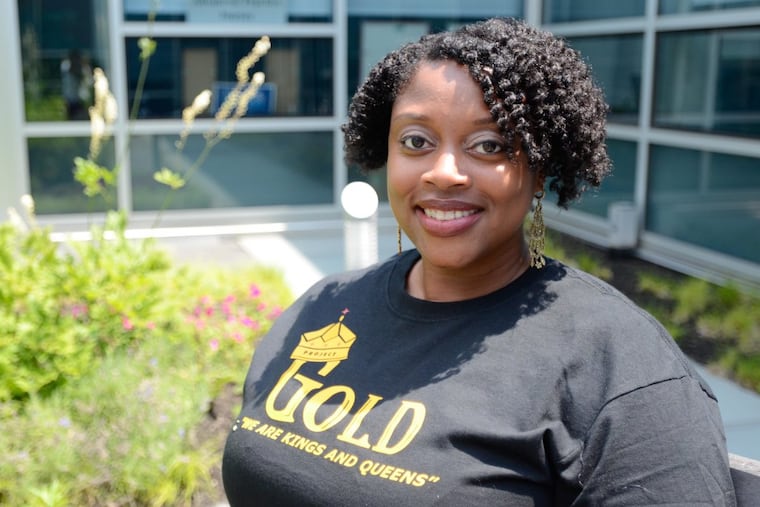Why are straight black women in Philly at high risk of HIV? Map offers clues
Mapping technology provides more nuanced understanding of HIV risk - and how to lower it.

Here's a lingering public health mystery: Heterosexual black women in Philadelphia are at higher risk of contracting HIV than their white counterparts. But no one can yet say exactly why — or how to fix the problem.
It's probably not behavior: Studies indicate that African American women have fewer sexual partners and are more likely to use condoms than white women from similar economic backgrounds. And they are not members of the highest-risk demographic: gay and bisexual men.
Public health campaigns for years focused on targeting HIV prevention efforts at the most vulnerable populations. New infections declined — there were fewer than 38,000 nationwide in 2014, down 10 percent in four years — but the virus persists in pockets that defy easy explanation.
Bridgette Brawner, who studies neighborhood influences on health at the University of Pennsylvania School of Nursing, coined a term to help explain the risk that people in these pockets face: geobehavioral vulnerability. In her latest study, published in September, she explored four Philadelphia census tracts to get a better understanding of the phenomenon.
"Geobehavioral vulnerability to HIV suggests that it is not just what you do, but also where you do it, and with whom, that increases your risk of HIV infection," Brawner wrote a few years ago.
One example: An outbreak of HIV in a rural, predominantly white corner of Indiana in 2015 was so surprising, and so sudden, that it became national news for weeks. It turned out that impoverished residents were grinding up and injecting opioids. Unlike in inner-city black neighborhoods, however, they had not been targeted by educational campaigns about the dangers of sharing needles, and there were few places to get clean ones.
The higher-than-expected risk faced by heterosexual black women in Philadelphia is another example. Studies have shown that when women outnumber men, the men tend to sleep around, raising the odds of spreading HIV. Philadelphia has far fewer black men than black women, due to factors such as early death and incarceration. It also is a city of neighborhoods, where people tend to befriend and date others in their social circle. So it may be that more men having been in prison becomes one of multiple factors that place an African American woman at greater risk than a white woman engaging in the same behavior.
In Philadelphia, among all black women, the rate of newly diagnosed HIV infection was 24.9 per 100,000 residents in 2015, compared with 3.8 for white women. For black men, the rate was 103.8 per 100,000; it was 16.5 for white men. For men who have sex with men, the rate was 906.1, according to the city Department of Public Health.
A better understanding of how geography and behavior interact can be used to more efficiently target prevention efforts, said Brawner, an assistant professor. Her latest study, published last month in the Journal of Urban Health, examined the makeup of four Philadelphia census tracts: two predominantly white and two predominantly black, with a high-HIV prevalence and low-HIV prevalence tract in each. The analysis, using data collected for an earlier study, looked at dozens of measures ranging from the number of vacant lots (locations for drug use, where HIV may be spread via dirty needles) to unemployment (which may make prostitution more likely, spreading the virus through sex) and the availability of health care (to help manage infections and reduce their spread). And, indeed, the patterns of disease varied.
The role of place is being increasingly recognized as a key component of public health, with mapping technologies providing various ways to measure it. Maps that show limited opportunities for exercise and availability of fresh fruits and vegetables are now used to target resources to prevent obesity.
Several years ago, a team led by Amy Nunn, an associate professor of public health and medicine at Brown University, used mapping technology to compare HIV outcomes among census tracts in Philadelphia. Those with the highest rates of people living with HIV or AIDS were in affluent white sections of Center City such as the Gayborhood. But death rates from the disease were higher elsewhere — in parts of South and Southwest Philadelphia with lower incomes and higher African American populations.
Nunn coauthored a new paper last month that, like Brawner's work, examined differences among census tracts by race and disease prevalence. It looked at each community's level of "social capital" — basically, the cohesiveness that encourages coordinated action. (Social capital is one element of what Brawner calls geobehavioral vulnerability.)
The social capital study, which was led by Yusuf Ransome, now at Yale, and also included researchers from Johns Hopkins and the University of Pennsylvania, found additional nuances about the progression of HIV and, perhaps, how to slow it.
"This community needs a boost for retaining people in care," Nunn said. "That community needs a boost for diagnosing people earlier in the course of their infection. The power of these maps is they tell you exactly where you need to go and for what."